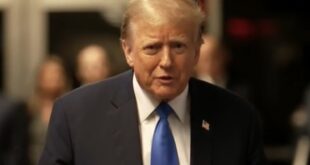President Donald Trump jolted his conservative base this week by saying he would welcome 600,000 Chinese students into American universities, a move that appears at odds with his administration’s hardline visa policies and his “America First” agenda.
The surprise announcement, made Monday in the Oval Office alongside South Korean President Lee Jae Myung, added confusion to the administration’s approach to China and drew immediate pushback from Trump loyalists.
“I hear so many stories about ‘We are not going to allow their students,’ but we are going to allow their students to come in. We are going to allow it. It’s very important — 600,000 students,” Trump said when asked about relations with Beijing.
Policy shift or mixed signals?
The figure cited by Trump is more than twice the number of Chinese students enrolled in the U.S. during the 2023-2024 academic year — about 277,000 — and comes despite new visa restrictions introduced under his administration.
Just weeks earlier, the State Department announced plans to revoke visas for Chinese nationals tied to the Communist Party and to heighten scrutiny of applicants in sensitive research fields. During his first term, Trump barred graduate students from Chinese universities linked to the military.
At a Cabinet meeting Tuesday, Trump doubled down, saying Chinese students help U.S. colleges financially. “Now, with that, we check and we’re careful, we see who is there,” he said.
Secretary of State Marco Rubio, seated nearby, has previously called for tougher measures against Chinese student visas, citing espionage concerns.
Backlash from Trump’s base
Prominent voices in Trump’s “Make America Great Again” movement sharply criticized the statement.
Former White House strategist Steve Bannon said Tuesday, “There should be no foreign students here for the moment.”
Rep. Marjorie Taylor Greene, R-Ga., blasted Trump’s rationale that schools rely on Chinese tuition revenue: “If refusing to allow these Chinese students to attend our schools causes 15% of them to fail, then these schools should fail anyways because they are being propped up by the CCP.”
On Fox News, host Laura Ingraham pressed Commerce Secretary Howard Lutnick on the policy shift. Lutnick defended Trump’s stance, arguing that 15% of U.S. colleges would collapse without international students. “Those are 600,000 spots that American kids won’t get,” Ingraham countered.
Numbers in perspective
Chinese student enrollment peaked at 372,532 in the 2019-2020 academic year, but has declined steadily amid worsening U.S.-China relations, the pandemic, and demographic shifts in China.
In 2023, about 277,398 Chinese nationals studied in the U.S., making China the second largest source of international students. Together, international students contributed $43.8 billion to the U.S. economy and supported 378,175 jobs last year, according to NAFSA, an association of international educators.
Beijing’s response
China’s Foreign Ministry said Trump told President Xi Jinping in a June call that the U.S. was “honored to have their students.” But Beijing has also denounced American visa restrictions as discriminatory.
Ministry spokesperson Mao Ning said Friday that some Chinese students have had visas revoked, been interrogated, or barred from entry under the Trump administration’s new rules. The Chinese Embassy in Washington even warned students to avoid entering through Houston’s George Bush Intercontinental Airport, citing cases of prolonged detentions.
“The U.S.’s moves severely violate the legitimate and lawful rights and interests of Chinese nationals … and dampen China-U.S. people-to-people exchanges,” Mao said.
What’s next
The White House and State Department have not explained Trump’s figure of 600,000, or whether it signals a formal change in policy. For now, the announcement has exposed deep divisions between Trump and his political base — and underscored the balancing act between U.S. economic reliance on foreign students and concerns about national security.
 Poli Alert Politics & Civics
Poli Alert Politics & Civics



